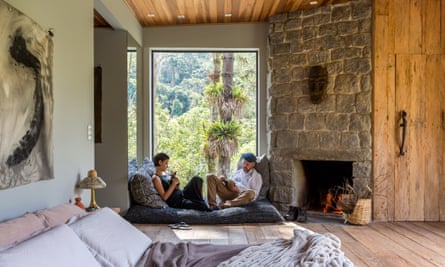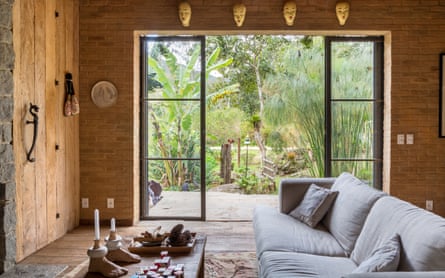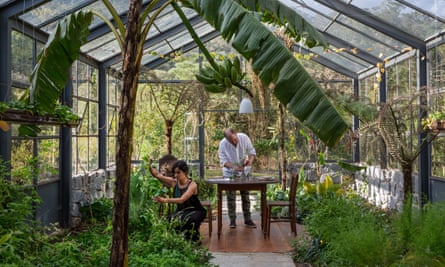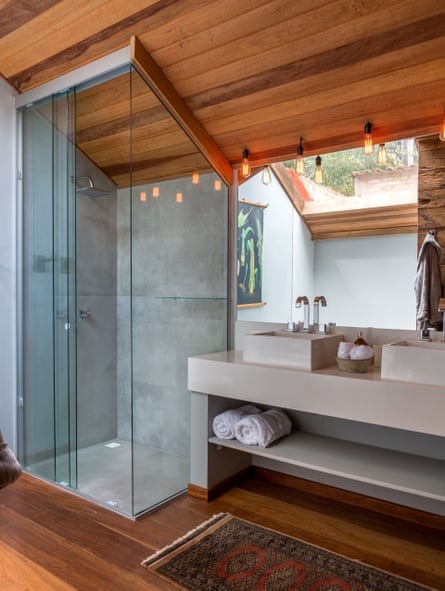
The Villa Mandaçaia project has changed dramatically over time. It began as a vegetable garden, created for the hundreds of plant species that the artist João Machado – a botanist in his spare time – used to collect as a hobby. João, who is also the son of the famous Brazilian painter Juarez Machado, grew up amid the canvases and brushes of his father’s workshop in Paris and in the lavender and sunflower fields of southern France. During other vacations, he would visit Brazil and, eventually, decided to buy a piece of land in the mountains and establish a garden with more than 400 of the plant species he’d collected from around the world.
When he found this sunny piece of land, bisected by a river, at an altitude of more than 1,000m in Visconde de Mauá, a village in the Serra da Mantiqueira – between Rio de Janeiro, Minas Gerais and São Paulo – he wasted no time: this was the ideal place to put his dream of seeing his garden bloom into practice. “I started by spreading the seedlings and positioning my sculptures, designing an organic path,” he says.
Soon after, João – who continued to spend long periods in France, where he worked in an art gallery – moved to Rio for good, married Arasy Benitez, a contemporary dancer from Paraguay, and together they decided to transform their piece of land into a mountain retreat and a space for artistic creation.
“We set out to build the house, developing every detail of the project,” João says. “During that time, we stayed in a small wooden chalet, which we erected in a few days. We could already tell it was a good place to be. There was a kind of magic here and the garden was full of aromas and exotic plants.”

João and Arasy’s house was born from an essential concept: they wanted the structure to become invisible over time – totally integrated into the landscape, with its facade covered in plants. They gave it the shape of a rustic shed with a contemporary accent coming from the choice of “clean” materials, such as stones (collected from the region), exposed bricks and wood reclaimed from the demolition of a century-old farm nearby.
“I like lived-in textures, full of history. Almost all the wood I used for this project came from old farms and keeps the marks of time,” João explains.

There is also the iron of the door frames, windows and the greenhouse assembly – reinforcing the clean style, and reminiscent of the look of an art gallery or studio. This is the impression of Villa Mandaçaia: a place of creation. Many rooms are filled with art – from paintings to ceramics and sculptures.
In the living room, which is connected to the kitchen, reclaimed wood covers the floor, walls and ceiling, evoking the feeling of a cosy cabin. A collection of antique masks adorns the wall, while the ceramic candlesticks in the shape of feet were made by João himself. “I was careful not to fill every little corner with some detail,” he says. “I come from a family that likes to accumulate.”

The couple’s bedroom is minimalist: a low bed, few pieces of furniture, a canvas painted by João. Next to the bedroom, the bathroom is lined with the same reclaimed wood used for the ceiling, floor and walls downstairs.
“The decoration reflects our sensibility. We could say that the style we prioritise is rustic minimalism. We like delicate but natural objects, with history and marked by time,” Arasy says.
“We literally live surrounded by pure inspiration,” João smiles.



